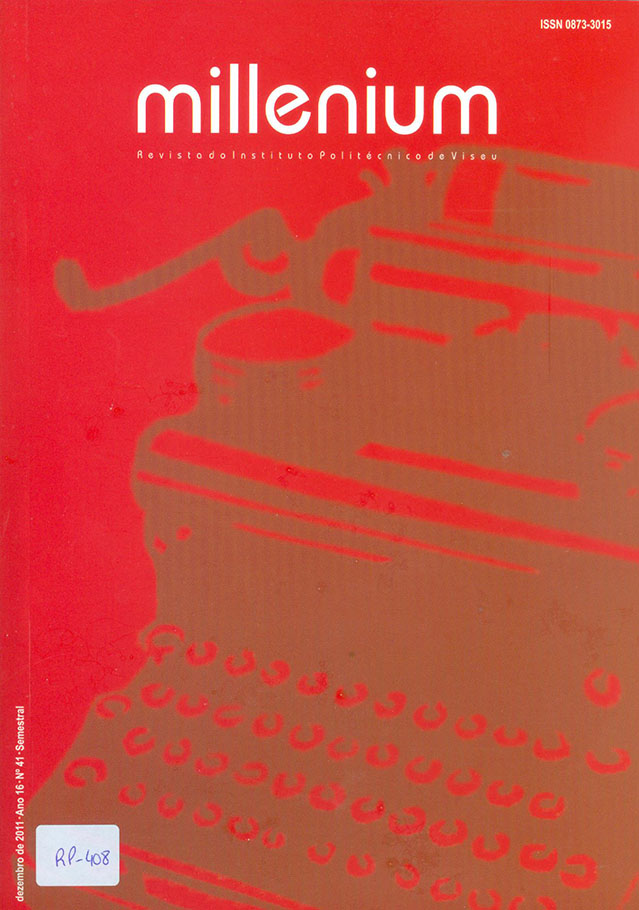Produção de Emulsionantes através da Glicerólise de Óleo de Bagaço de Azeitona Catalisada pela Lipase da Candida Rugosa Imobilizada em Espumas de Poliuretano
Abstract
Os monoacilgliceróis (MAG) e diacilgliceróis (DAG) são dos emulsionantes mais utilizados na indústria alimentar e farmacêutica.
Neste trabalho pretendeu-se selecionar preparações enzimáticas imobilizadas adequadas à biocatálise da glicerólise do óleo de bagaço de azeitona refinado em nhexano para a produção de glicéridos parciais (MAG e DAG).
Para tal, testaram-se duas preparações enzimáticas da Candida rugosa imobilizadas em espumas de poliuretano (Hypol) com diferentes aquafilicidade (FHP X4300 e FHP 2002).
A modelação e otimização da glicerólise foram efetuadas recorrendo à metodologia das superfícies de resposta. Os ensaios foram realizados em função da razão molar glicerol/triacilgliceróis e o valor da aw inicial.
Os valores mais elevados de MAG (32%, m/m) e DAG (18%, m/m) foram obtidos quando a lipase se encontrava imobilizada em espuma de poliuretano FHP X4300.
Downloads
References
• Armstrong, D. W., Yamazaki, H. (1986). Natural flavours production: A biotechnological approach. Trends
in Biotechnol., 4: 264-268.
• Balcao, V. M., Paiva, A. L., Malcata, F. X. (1996). Bioreactors with immobilized lipases: state of the art.
Enzyme Microb Technol., 18: 392-416.
• Becher, P. (1957). Emulsions: Theory and Practice. American Chemical Society Monograph, n.º 135,
Reinhold, New York.
• Ferreira-Dias, S., da Fonseca, M. M. R. (1993). Enzymatic glicerolysis of olive oil: a reactional system with
major analytical problems. Biotechnol. Technol., 7 (7): 447-452.
• Ferreira-Dias, S., da Fonseca, M. M. R. (1995). Production of monoglycerides by glycerolysis of olive oil
with immobilized lipases: effect of water activity. Bioprocess Eng., 12 (5): 327-337.
• Ferreira-Dias, S., Correia, A. C., Baptista, F. O. (1999). Activity and batch operational stability of Candida
rugosa lipase immobilized in different hydrophilic polyurethane foams during hydrolysis in a biphasic
medium. Bioprocess Eng., 21: 517-524.
• Fisher, L. R., Parker, N. S. (1988). Effect of surfactants on the interactions between emulsion droplets, In: E.
Dickinson, G. Stainsby (Eds.). Advances in Food Emulsions and Foams. Elsevier Applied Science, London
and New York, pp. 45-90.
• Goderis, H. L., Ampe, G., Feyten, M. P., Fouwé, B. L., Guffens, W. M., Van Cauwenbergh, S. M., Tobback,
P. P. (1987). Lipase-catalyzed ester exchange reactions in organic media with controlled humidity.
Biotechnol. Bioeng. 30 (2): 258-266.
• Heisler, A., Rabiller, C., Hublin, L. (1991). Lipase catalysed isomerisation of 1,2-(2,3)-diglyceride into 1,3-
diglyceride. The crucial role of water. Biotechnol. Lett., 13 (5): 327-332.
• Kazlauskas, R. J, Bornscheuer, U. T. (1998). Biotransformations with Lipases. In: H. J. Rhem, P. Stader
(Eds.), A Multi Comprehensive Treatise Biotechnology, 8: 37-191.
• Kennedy, J. F., Cabral, J. M. S. (1987). Enzyme immobilization in biotechnology. In: H. J. Rhem, G. Reed
(Eds.). Enzyme Technology, 7: 347-404.
• Lowry, R. R., Tinsley, I. J. (1976). Rapid colorimetric determination of free fatty acids. J. Am. Oil Chem.
Soc., 53 (7): 470-472.
• Macrae, A. R. (1985). Interesterification of fats and oils. In: J. Tramper, H.C. van der Plas, P. Linko (Eds.).
Biocatalysis in Organic Syntheses. Elsevier Science Publishers B. V., Amsterdam, pp. 195-208.
• Nandi, S., Gangopadhyay, S., Ghosh, S. (2005). Production of medium chain glycerides from coconut and
palm kernel fatty acid distillates by lipase-catalyzed reactions. Enzyme Microb Technol., 36: 725-728.
• Noureddini, H., Medikonduru, V. (1997). Glycerolysis of Fats and Methyl Esters. J. Am. Oil Chem. Soc., 74
(4): 419-425.
Persson, M., Mladenoska, I., Wehtje, E., Adlercreutz, P. (2002). Preparation of lipases for use in organic
solvents. Enzyme Microb Technol., 31: 833-841.
• Pires-Cabral, P., da Fonseca, M. M. R, Ferreira-Dias, S. (2007). Modelling the production of ethyl butyrate
catalysed by Candida rugosa lipase immobilized in polyurethane foams. Biochem Eng J.., 33 (5): 327-337.
• Rosu, R., Uozaki, Y., Iwasaki, Y., Yamane, T. (1997). Repeated Use of Immobilized Lipase for
Monoacylglycerol Production by Solid-Phase Glycerolysis of Olive Oil. J. Am. Oil Chem. Soc., 74:
-158.
• Shao, P., Meng, X., He, J., Sun, P. (2008). Analysis of immobilized Candida rugosa lipase catalyzed
preparation of biodiesel from rapeseed soapstock. Food Bioprod Process., 86: 283-289.
• Sonntag, N. O. V. (1982). Fat splitting, esterification, and interesterification, In: D. Swern (Ed.). Bailey’s
Industrial Oil and Fat Products, volume 2. 4ª edition. John Wiley & Sons, pp. 97-173.
• Uzzan, A. (1996): Olive Oil, In: A. Karleskind and J. P. Wolff (Eds.). Oils and Fats Manual – A
Comprehensive Treatise. Properties, Production, Applications. Intercept Ltd.: pp. 783-788.
• Vuataz, L. (1986). Response Surface Methodology, In: J. R. Piggott (Ed.). Statistical Procedures in Food
Research. Elsevier Applied Science, London & New York, pp. 101-123.
• Zu-Yi, L., Ward, O. P. (1993). Stability of microbial lipase in alcoholysis of fish oil during repeated enzyme
use. Bioterchnol. Lett. 15 (4): 393-398.
Downloads
Published
How to Cite
Issue
Section
License
Authors who submit proposals for this journal agree to the following terms:
a) Articles are published under the Licença Creative Commons (CC BY 4.0), in full open-access, without any cost or fees of any kind to the author or the reader;
b) The authors retain copyright and grant the journal right of first publication, allowing the free sharing of work, provided it is correctly attributed the authorship and initial publication in this journal;
c) The authors are permitted to take on additional contracts separately for non-exclusive distribution of the version of the work published in this journal (eg, post it to an institutional repository or as a book), with an acknowledgment of its initial publication in this journal;
d) Authors are permitted and encouraged to publish and distribute their work online (eg, in institutional repositories or on their website) as it can lead to productive exchanges, as well as increase the impact and citation of published work
Documents required for submission
Article template (Editable format)















